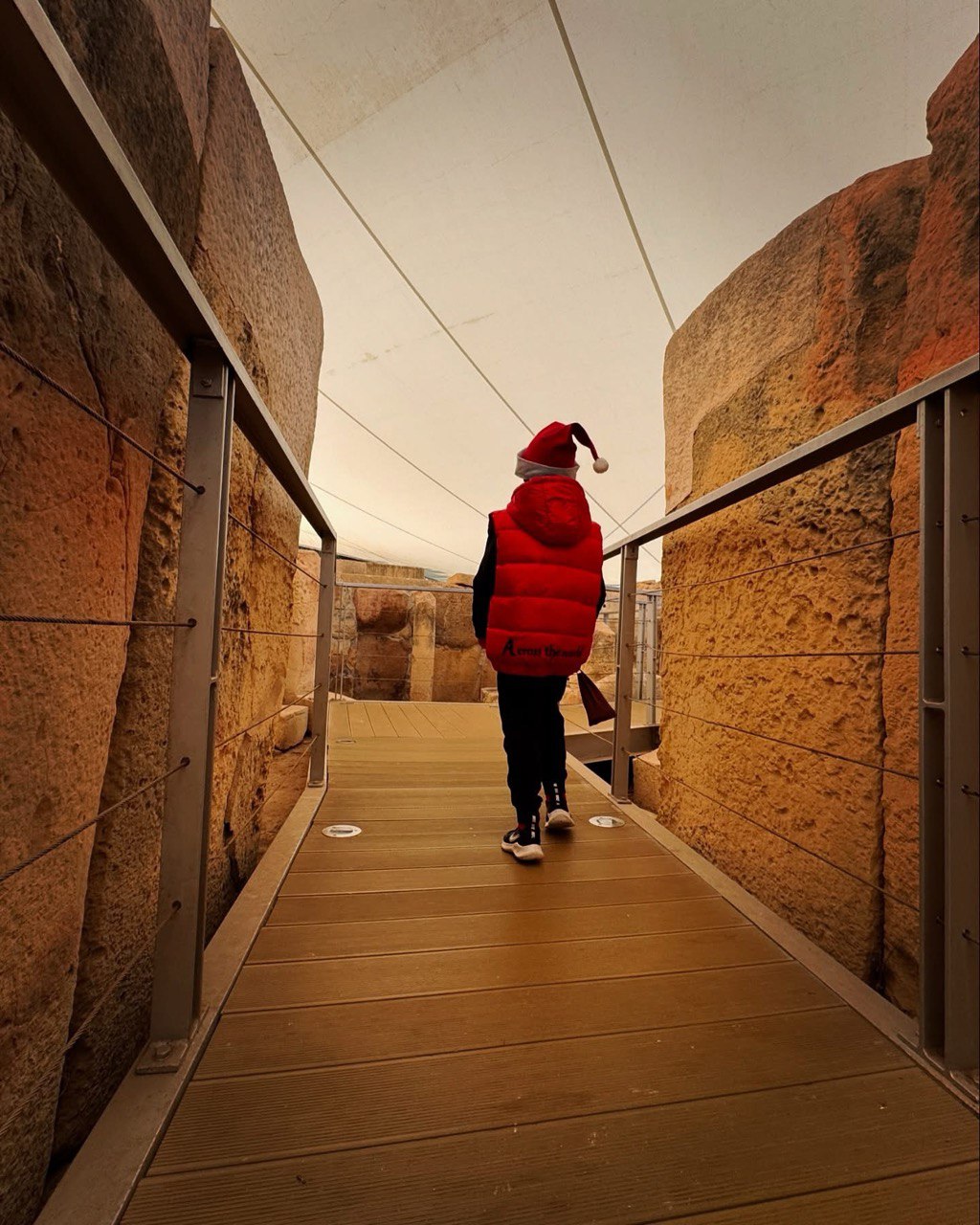Location: Tarxien village, southeast Malta.
Period: 3600–2500 BC (Late Neolithic).
Status: UNESCO World Heritage Site (since 1980, as part of the Megalithic Temples of Malta).
Overview
The Tarxien Temples are among Malta’s most impressive archaeological landmarks, forming a complex of megalithic structures. Built by the ancient Maltese, this temple complex served as a religious center. It is one of the best-preserved and most thoroughly researched megalithic temple sites in Malta.
The complex consists of four interconnected temples built in different periods:
1. The South Temple (the oldest).
2. The Central Temple (featuring the most intricate architecture).
3. The East Temple (used for rituals).
4. Remains of a smaller fourth structure.
Architectural Features
• Megaliths: Large stone blocks (some weighing up to 20 tons) used to construct walls and structures.
• Sculptures and Carvings:
• Stone reliefs depicting animals (bulls, pigs).
• Spiral patterns and symbolic designs.
• Sacrificial Altars: Indicating the temples’ use for fertility rituals.
• Stone Bowls and Vessels: Discovered inside the temples, likely used for offerings.
Functionality
The Tarxien Temples served as a religious and ceremonial hub. Evidence of rituals includes:
• Offerings to fertility deities.
• Animal sacrifices.
• Ceremonies likely tied to agricultural cycles.
One of the most significant discoveries is a massive statue fragment known as the “Fat Goddess” (or Goddess of Fertility), suggesting a focus on the worship of female divinity.
Excavation and Restoration
• The complex was discovered in 1914 by archaeologist Themistocles Zammit.
• Restoration began in the mid-20th century and continues today.
• A protective shelter now safeguards the site from weather damage.
Interesting Facts
1. Technological Ingenuity: Despite lacking metal tools, ancient builders used sophisticated techniques for shaping and moving stones.
2. Burial Practices: Human remains found near the site suggest ties to ritualistic activities.
3. Connection with Other Megaliths: The Tarxien Temples are part of a broader network of Maltese megalithic sites, including Ħaġar Qim, Mnajdra, and Ġgantija.
Visiting Information
Today, the Tarxien Temples are open to tourists. Informative panels are available on-site, and artifacts from the site are preserved in Malta’s National Museum of Archaeology in Valletta.
The Tarxien Temples stand as a unique testament to the engineering skill and spiritual life of Malta’s ancient inhabitants.
Period: 3600–2500 BC (Late Neolithic).
Status: UNESCO World Heritage Site (since 1980, as part of the Megalithic Temples of Malta).
Overview
The Tarxien Temples are among Malta’s most impressive archaeological landmarks, forming a complex of megalithic structures. Built by the ancient Maltese, this temple complex served as a religious center. It is one of the best-preserved and most thoroughly researched megalithic temple sites in Malta.
The complex consists of four interconnected temples built in different periods:
1. The South Temple (the oldest).
2. The Central Temple (featuring the most intricate architecture).
3. The East Temple (used for rituals).
4. Remains of a smaller fourth structure.
Architectural Features
• Megaliths: Large stone blocks (some weighing up to 20 tons) used to construct walls and structures.
• Sculptures and Carvings:
• Stone reliefs depicting animals (bulls, pigs).
• Spiral patterns and symbolic designs.
• Sacrificial Altars: Indicating the temples’ use for fertility rituals.
• Stone Bowls and Vessels: Discovered inside the temples, likely used for offerings.
Functionality
The Tarxien Temples served as a religious and ceremonial hub. Evidence of rituals includes:
• Offerings to fertility deities.
• Animal sacrifices.
• Ceremonies likely tied to agricultural cycles.
One of the most significant discoveries is a massive statue fragment known as the “Fat Goddess” (or Goddess of Fertility), suggesting a focus on the worship of female divinity.
Excavation and Restoration
• The complex was discovered in 1914 by archaeologist Themistocles Zammit.
• Restoration began in the mid-20th century and continues today.
• A protective shelter now safeguards the site from weather damage.
Interesting Facts
1. Technological Ingenuity: Despite lacking metal tools, ancient builders used sophisticated techniques for shaping and moving stones.
2. Burial Practices: Human remains found near the site suggest ties to ritualistic activities.
3. Connection with Other Megaliths: The Tarxien Temples are part of a broader network of Maltese megalithic sites, including Ħaġar Qim, Mnajdra, and Ġgantija.
Visiting Information
Today, the Tarxien Temples are open to tourists. Informative panels are available on-site, and artifacts from the site are preserved in Malta’s National Museum of Archaeology in Valletta.
The Tarxien Temples stand as a unique testament to the engineering skill and spiritual life of Malta’s ancient inhabitants.
